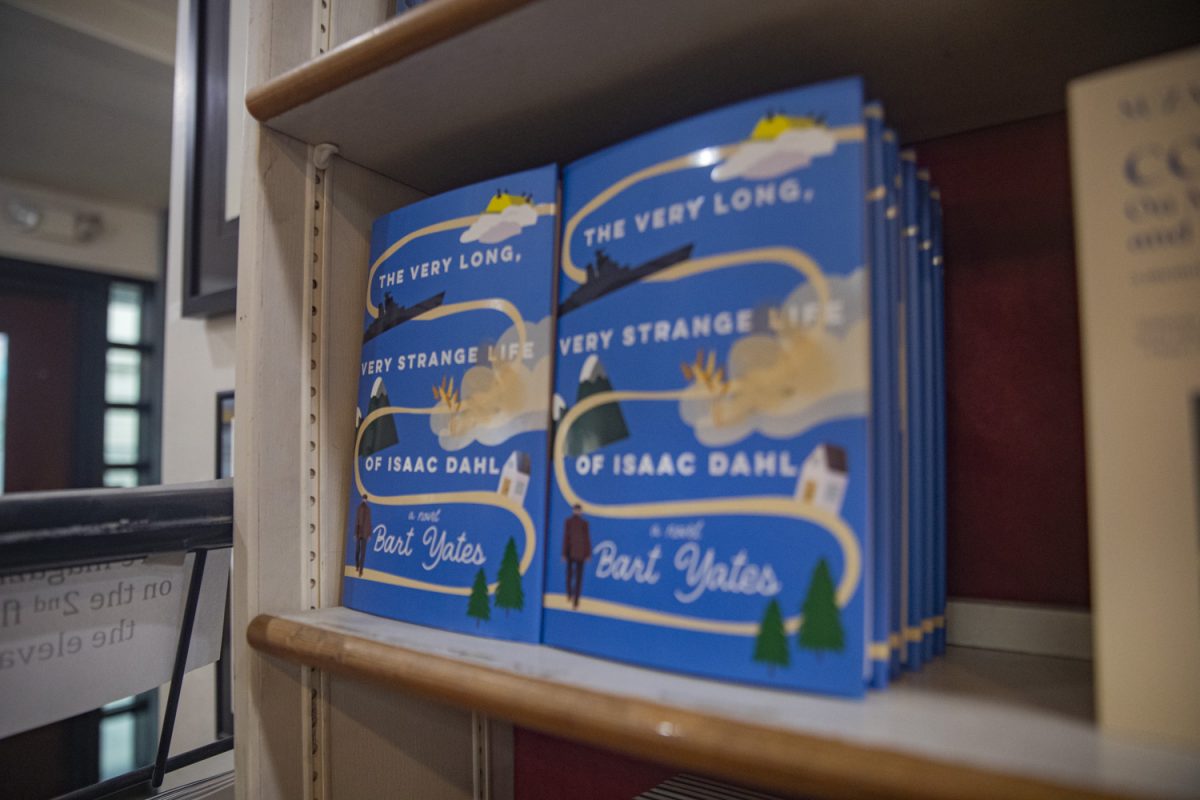Walking around campus this semester, it’s hard not to notice the drastic changes taking place — entire buildings can be gone from one class to the next.
Matthew Wiegand, a native Iowa City artist, took up the mission to preserve the historical significance of these UI buildings over the summer as he created paintings of the buildings being destroyed.
Wiegand’s paintings are being displayed at the State Historical Society, 402 Iowa Ave., open from 9 a.m. to 4:30 p.m. Tuesday through Saturday.
"This is my city, and I’m going to miss these places," Wiegand said. "A lot of the oldest buildings are coming down, which is the nature of things, but I want to preserve some."
Gerhard Loewenberg, a patron of Wiegand’s art and an old friend, believes Wiegand has done just that.
"Wiegand has combined his sense for history and his devotion to this community to create a series of portraits of the buildings that were central to the character of Iowa City before they were swept away in the last decade," Loewenberg said. "He has preserved them for us with striking images of the buildings on campus and in the city that we have lost forever."
While he cannot stop the demolition of the buildings, Wiegand can allow others a glimpse at the magic he felt within their walls.
"I want people to look and see the beauty and feel the wonder that I felt being there," he said.
In his childhood and upon returning from college in California, Wiegand spent countless hours in these buildings, the Art Building in particular.
"After college, I’d wake up, have a cup of coffee, and then I’d go down to the Art Building," Wiegand said. "I’d go straight to the art library and spend all of the morning and part of the afternoon studying and copying everything from those books."
Increasing his visual vocabulary and trying different techniques, Wiegand expanded his artistic abilities. These abilities are very apparent in this exhibit, as he plays with displays of the buildings at night and during the day, using different methods and styles to capture the essence of the buildings.
"There’s no right way; that’s what art is, but to know how it was created, you have to get deep into research," he said.
Wiegand did research on Zen painting in years previous, and upon the suggestion of a retired professor just passing by as he painted, Wiegand decided to incorporate this unique idea into his painting Art Courtyard with Sculpture.
"This was a pivotal point in the process, because a retired art professor came through and asked if I had studied Zen painting and letting a painting let you know when you’re done, not covering every inch, which is something I experimented with here," Wiegand said.
An interesting idea, given that his favorite painting in the exhibit, Hancher at Night, is done in such detail.
"In these two paintings [Hancher and Hancher at Night] I kind of achieved something, they jump out at me, they feel completed," he said.
Completion of the project was up in the air for a while, as Wiegand only had a month and a half to finish. He recalled feeling a lot of pressure as he raced against the clock before the buildings were torn down.
Immersing himself in his work was no strange feeling for Wiegand, who had done much of the same after college.
"I kind of threw myself at my art and threw myself in the face of people who were in my way," he said. "I kind of turned into a mad man and was hospitalized and diagnosed with schizophrenia, which to me, connected me to Van Gogh. I later thought the diagnosis was wrong, but I dealt with that for a few years."
Through these paintings, Wiegand found further connections to Van Gogh.
"There are these arches around the outside [of the Art Building], and they’re beautifully incorporated in it. They remind me of the hospital Van Gogh stayed at in Saint-Rémy," he said. "The trees, too, are very similar. So it was always my theory that the architect had a bit of art history in mind when he built the art library."
Wiegand expresses remorse over losing the buildings he so loves, but the process of preserving them had been rather cathartic for him. It was a way for him to deal with the "death" of the buildings, which is why death is such a strong theme throughout the works.
The paintings of flowers in the collection may seem counterintuitive to this idea, but Wiegand does not think so.
"I think the flowers fit nicely with the buildings," he said. "Flowers change and die, and these paintings are about the deaths of these buildings."
Others have noticed the underlying theme of death in the exhibit as well.
"I think there are many layers of meaning in terms of loss," said Mary Bennett, the special-collections coordinator at the State Historical Society. "[Wiegand] has lost some close friends, and we are all losing these buildings, so loss is definitely a recurrent theme throughout the works."
A very subtle tribute to tragedy and death also occurs in the paintings of one building.
"There were three construction workers who died during the original construction of Hancher, so the painting takes that angle," he said. "I wanted to get the magnificence of the building."
One of the most noticeable elements of Wiegand’s painting of Hancher is the color. While the building is actually a light grey, stone color, Wiegand painted them a pale yellow, saying that is the way he saw it.
"I see the world very intensely, and I see very vivid color, and photos just don’t do it for me," he said. "The goal was to document the history, and do it in my own way that wasn’t a photograph. I love these buildings, I spent a lot of time there. I painted them because I was sad."
ART






